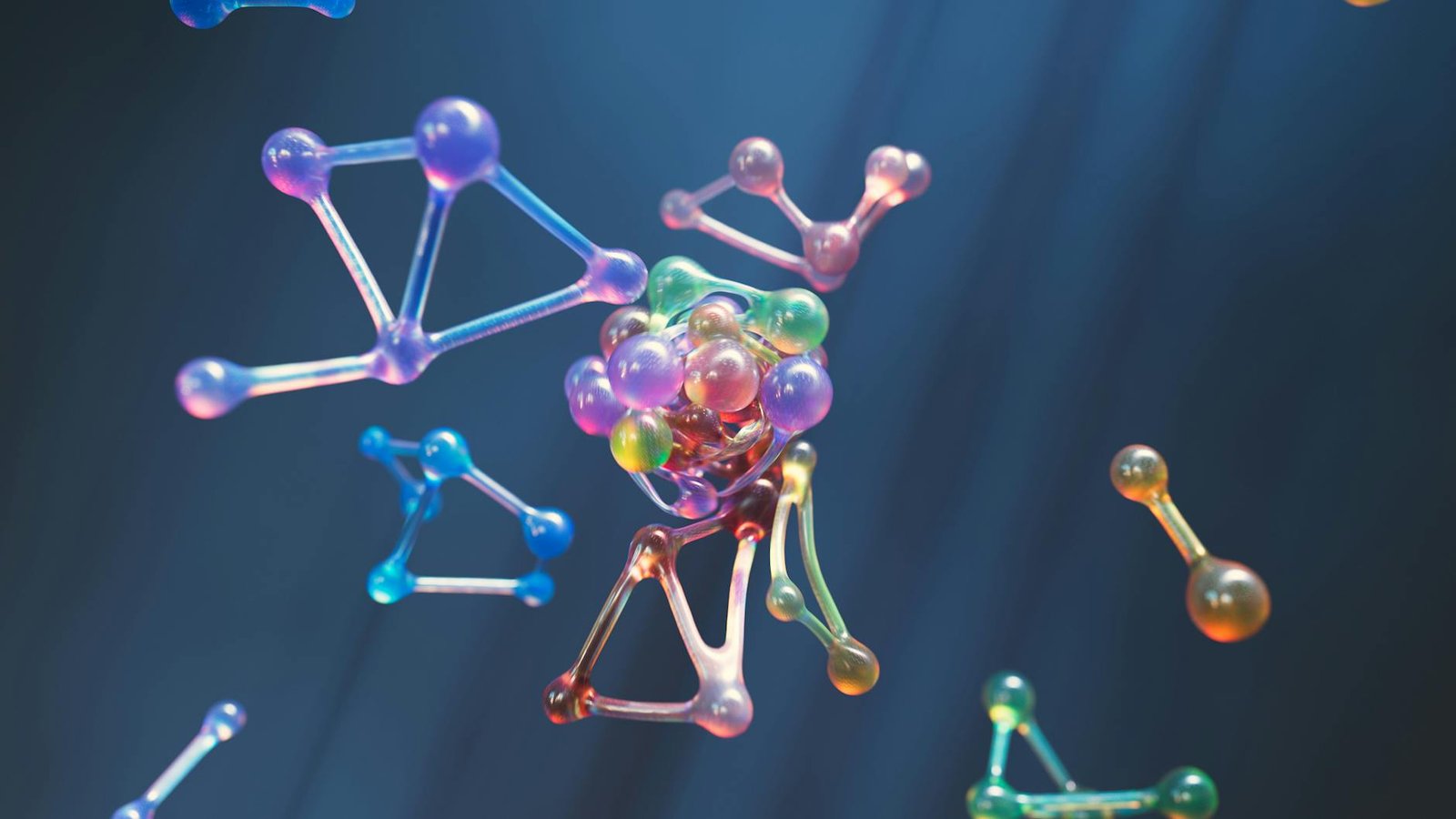
🌟 Introduction: The Romance of Chemistry
In the grand drama of the universe, every star, every rock, every drop of water — even we ourselves — are made of atoms. But atoms rarely like being alone. Just like people seeking companionship, atoms seek stability. And in their quest for balance, they form connections — what chemists call chemical bonds.
But how do these invisible particles form such strong relationships? Why do sodium and chlorine come together to create something as essential as salt? Let’s explore the chemistry of love — the bonds that hold the universe together.
🧬 What Is a Chemical Bond?
A chemical bond is the force that holds atoms together in compounds and molecules. It’s nature’s way of making atoms share, give, or take electrons to achieve stability — usually a full outer shell of electrons, often 8 (called the octet rule).
Think of a bond as a handshake, a hug, or a shared umbrella in the rain — atoms come closer to make life better together.
There are three main types of chemical bonds:
- Ionic Bonds
- Covalent Bonds
- Metallic Bonds
Let’s look at each one closely.
⚡ Ionic Bonds: The Powerful Attraction
🔹 Definition:
An ionic bond is formed when one atom donates electrons and another accepts them. This usually happens between a metal and a non-metal.
- Metals (like sodium) have few electrons in their outer shell and want to give them away.
- Non-metals (like chlorine) need a few more to complete their outer shell.
So, sodium gives one electron to chlorine. Sodium becomes Na⁺ (positive ion), and chlorine becomes Cl⁻ (negative ion). Opposites attract — and the ionic bond is born.
🌍 Example:
Sodium chloride (NaCl) – table salt
This humble compound is essential for life — and it’s a beautiful example of ionic bonding.
🧠 Analogy:
Think of sodium as someone with extra lunch giving it to a hungry friend. Both are happier together.
🤝 Covalent Bonds: Sharing Is Caring
🔹 Definition:
A covalent bond forms when two non-metal atoms share electrons instead of transferring them. They both hold on to the electrons tightly, forming a mutual partnership.
This bond is common in organic compounds and molecules essential to life like water (H₂O) and carbon dioxide (CO₂).
🌍 Example:
- Water (H₂O) — Each hydrogen shares one electron with oxygen.
- Oxygen gas (O₂) — Two oxygen atoms share two pairs of electrons (called a double bond).
🧠 Analogy:
Imagine two friends holding a rope at both ends. They aren’t giving it away — they’re sharing it equally.
🔗 Metallic Bonds: The Sea of Electrons
🔹 Definition:
In metallic bonds, metal atoms release their outer electrons into a “sea of electrons” that flows around them. These electrons are delocalized, meaning they move freely. This gives metals their strength, shine, and ability to conduct electricity.
🌍 Example:
- Copper (Cu) in electrical wires
- Iron (Fe) in construction materials
🧠 Analogy:
Picture a group of people around a bonfire, sharing its warmth. No one owns it alone, but all benefit.
⚖️ Why Do Atoms Bond?
Atoms form bonds to:
- Achieve stability (full outer shell of electrons)
- Lower their energy
- Become more reactive or more inert, depending on the situation
In simple terms, bonding helps atoms feel “complete” — like pieces of a puzzle fitting together.
🧪 Special Types of Bonds
Besides the main three, here are a few more bonding concepts students should know:
1. Hydrogen Bonding
- Weak bond but very important in water and DNA structure.
- Gives water its high boiling point and surface tension.
2. Polar Covalent Bonds
- Unequal sharing of electrons (e.g., in H₂O), making one side slightly negative and the other slightly positive.
3. Coordinate Bonds
- One atom donates both electrons in a shared pair (seen in some complex ions).
🔍 Real-World Importance of Bonds
- Water’s unique properties — from lakes freezing on top to enabling life — come from hydrogen bonding.
- Food we eat, medicines we take, and fabrics we wear are all built on molecules with strong covalent or ionic bonds.
- Metals conduct electricity and are shaped into tools because of metallic bonding.
Bonds are not just theoretical — they shape our reality!
🧠 Summary: The Chemistry of Connection
| Type of Bond | Electron Movement | Common Between | Example |
|---|---|---|---|
| Ionic | Transfer (give/take) | Metal + Non-metal | NaCl |
| Covalent | Sharing | Non-metal + Non-metal | H₂O, CO₂ |
| Metallic | Free-flowing “sea” of e⁻ | Metals only | Fe, Cu |
Atoms bond to become more stable, forming the foundation of all matter.
✏️ Practice Questions
- What is the main difference between ionic and covalent bonds?
- Give two examples of compounds formed by covalent bonding.
- What type of bond allows metals to conduct electricity?
- Why does sodium form an ionic bond with chlorine?
- What’s the role of electrons in chemical bonding?
📚 Final Thought
Chemical bonds are the quiet architects of our universe. From the stars to the cells in your body, everything is held together by invisible forces of attraction. It’s not an exaggeration to say that life is a story of connections — and chemistry is the language that writes it.









